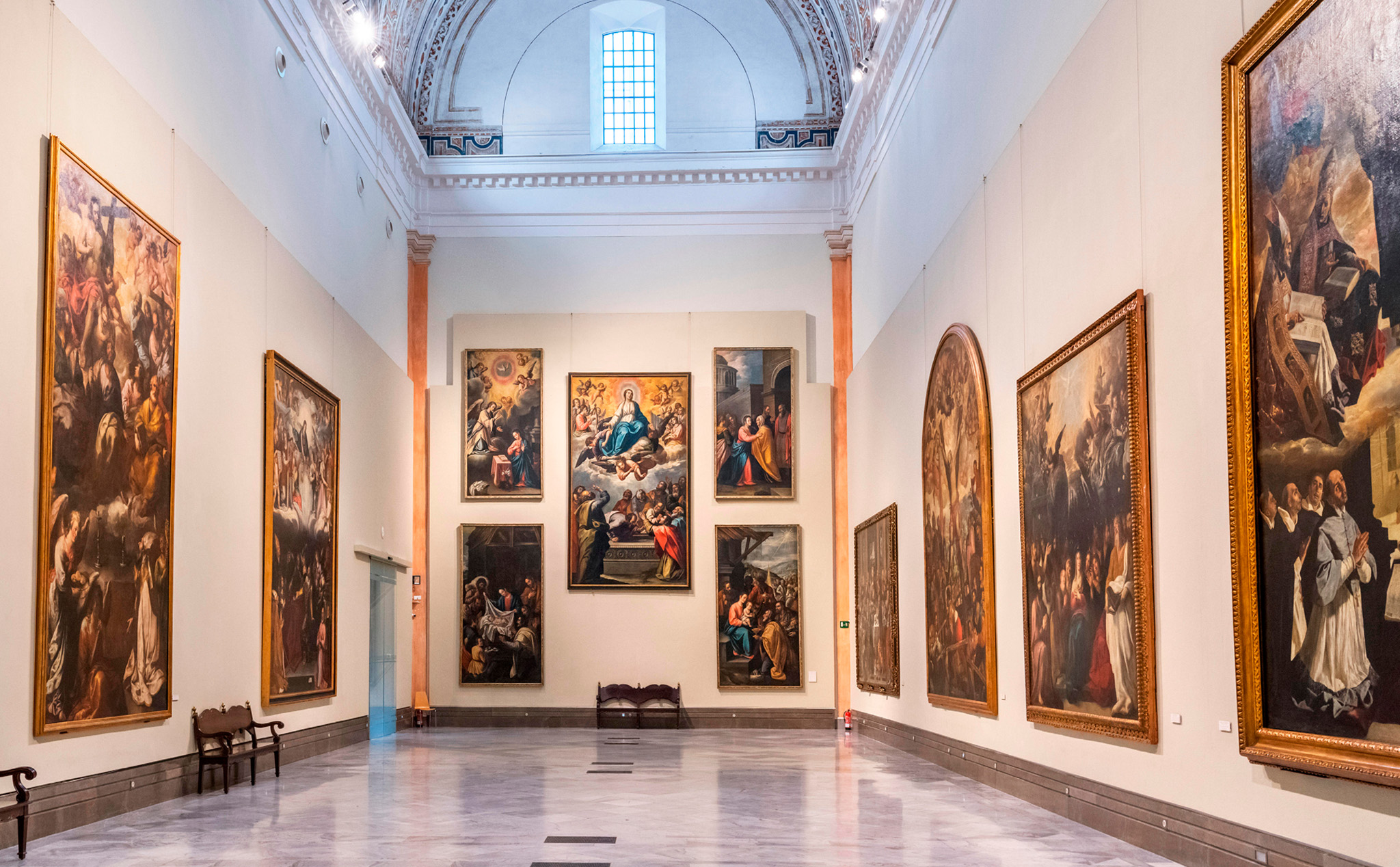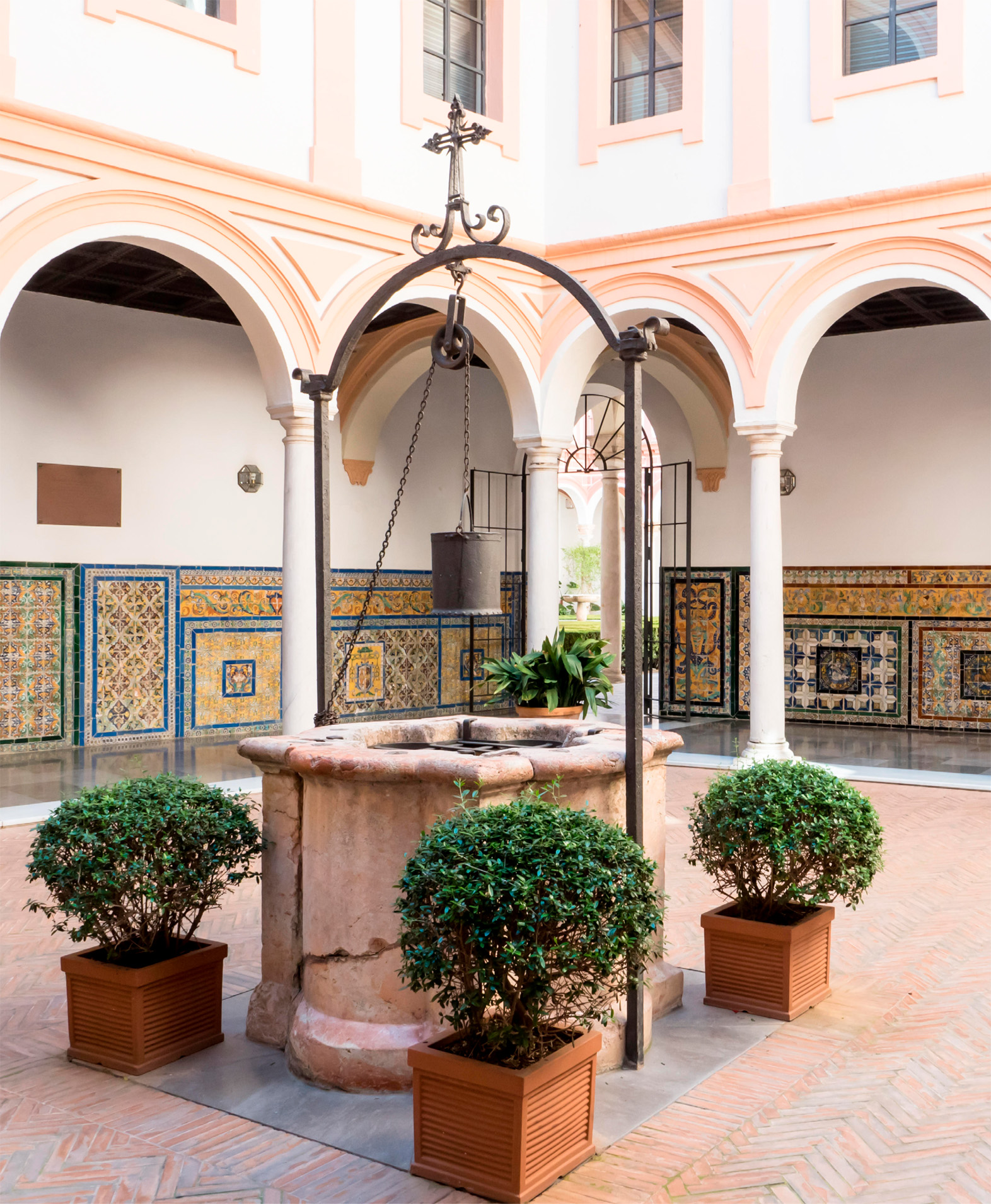
t One of the light and airy galleries of the Museo de Bellas Artes

t One of the light and airy galleries of the Museo de Bellas Artes
Experience El Arenal

t The Claustro del Aljibe, where the route begins, centres on a well.
Completed in 1612 by Juan de Oviedo, the Convento de la Merced Calzada is built around three patios, adorned with azulejos. The Claustro Mayor is the largest of these, and the Claustro de los Bojes is enclosed by Tuscan-style arches. Starting in the Claustro del Aljibe, signs lead you on a self-guided chronological tour through the museum’s 14 galleries. Works on the ground floor progress from the 14th century through to Baroque; those upstairs from the Baroque to the early 20th century. Among the star attractions is Murillo’s La Servilleta, a Virgin and Child, which is said to be painted on a napkin (servilleta). It now hangs in the restored convent church, which is noteworthy for its Baroque domed ceiling, painted by Domingo Martínez. Elsewhere, you’ll find several fine works by Zurbarán and a gallery devoted to Juan de Valdés Leal’s forceful religious paintings.

Insider Tip
An art market takes place in the Plaza del Museo every Sunday morning. More than 40 artists exhibit their works here and you can pick up everything from prints to photos, sculptures to paintings. Browse the stalls for the next big name.
Experience El Arenal

La Servilleta, a Virgin and Child (1665–8)
One of Murillo’s most popular works.
San Hugo en el Refectorio (1655)
Created by Zurbarán for the Monasterio de Santa María de las Cuevas, it depicts the monks renouncing meat.
San Jerónimo (1528)
Sculpted by the Florentine Torrigiano.
La Inmaculada (1672)
This work hangs in Sala 8, the gallery devoted to Valdés Leal.
Apoteosis de Santo Tomás de Aquino (1631)
Zurbarán’s vivid use of colour brings the scene to life.